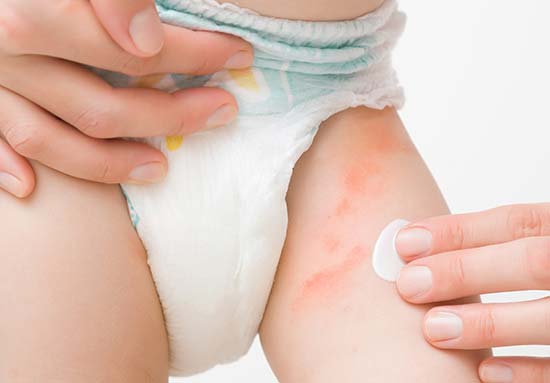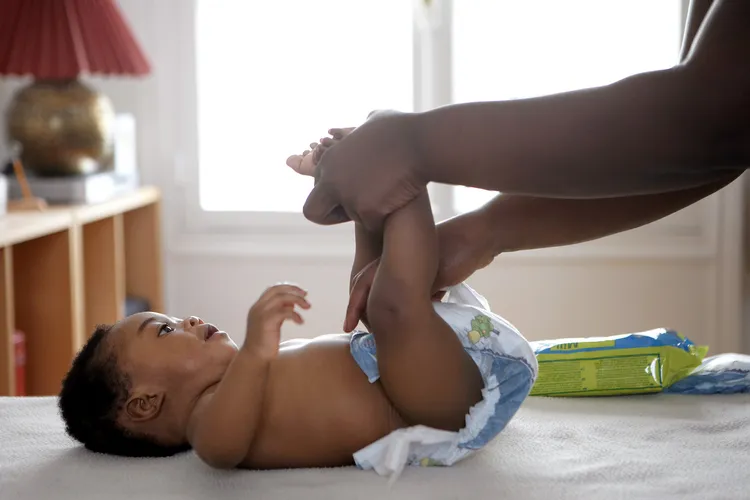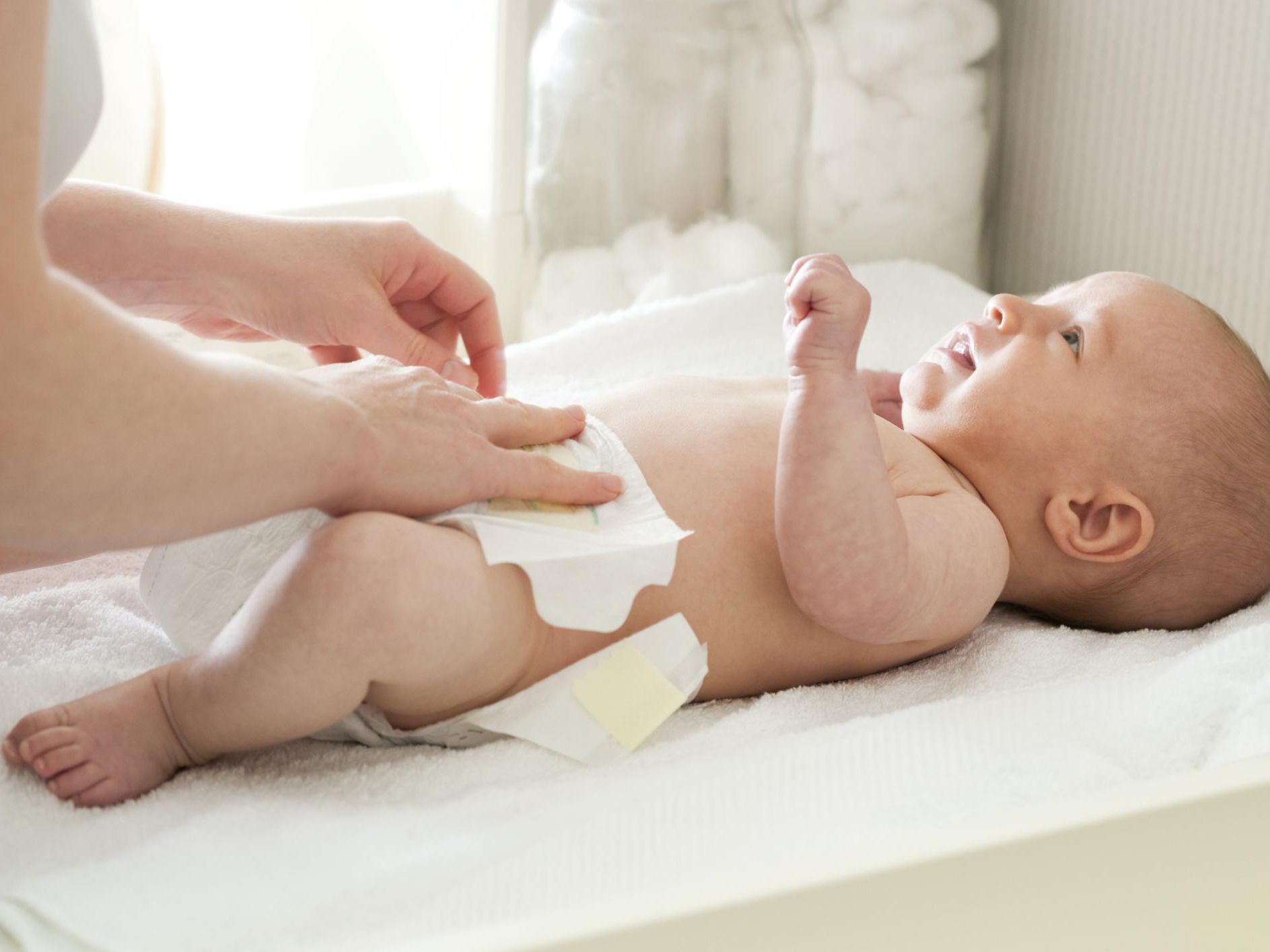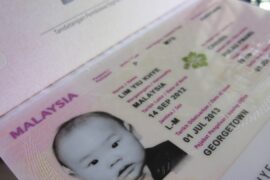Diaper rash is a rather common occurrence. When you touch your newborn’s bottom or groin area when changing his diaper, you may discover that it has turned scarlet and that he appears to be unhappy. This is normal. Your child is most likely suffering from a diaper rash.
Diaper rash is a frequent condition that affects newborns and children who are cloth diapered or who use disposable diapers. It affects babies under 12 months more frequently than older children and is caused by an allergic reaction to the diapers. The skin around the diaper area becomes flushed and irritated, which indicates the presence of this ailment (thighs, buttocks, and genitals).
Diaper rash affects the vast majority of babies at some point in their lives, but it is easily cured in the privacy of one’s own home with a few simple steps. Knowing what to do and how to deal with the rash properly can help ensure that you get rid of it as quickly as possible.

What causes Diapers Rash?
It’s important to understand what causes diaper rash before looking at techniques to treat it effectively. Different causes may necessitate a variety of treatment options.
- Irritation:
- Irritation is the most common reason for diaper rash. A newborn’s sensitive skin might get irritated after being subjected to pee and stool for a long period of time, especially if the baby is using less absorbent diapers. Extremely tight diapers can also cause discomfort to the baby’s skin because the cloth rubs against the skin. It is possible that if the lining material is coarse, it can cause friction, which will result in a rash as well.
- Candida overgrowth: Candida is a form of yeast that can be present on normal skin without causing any symptoms or having any detrimental effects. The yeast may overgrow and create a secondary infection in the diaper region. Warm, moist, and softened areas with a higher skin pH, such as the underside of a wet diaper, armpits, neck, and breast folds, are common places for overgrowth to take place.
- Bacterial infection: Certain types of bacteria passed from person to person or found in the environment might cause or aggravate diaper rash. A streptococcal infection manifests itself as bright red rashes around the anus, whereas a staphylococcal infection manifests itself as yellow crusting, boils, or pimples.
- Allergy: Children who are allergic or have eczema may develop diaper rash as a result of being exposed to irritants or triggers contained in products that are used on them or applied to them, such as diapers, baby wipes, and other personal care products, lotions, oils, creams, and so on. Rashes induced by allergies might arise in different parts of the body.
- Other causes/factors: Diaper rash increases when your kid begins eating solid meals or when his diet is altered. It is possible that other rare skin disorders, such as seborrheic dermatitis or pediatric psoriasis, will manifest themselves as a diaper rash as well.

How to manage and prevent the Diapers Rash
It is critical to provide your infant with proper diaper care in addition to any medication or treatment that may be provided by their pediatrician.
Choose diapers that are appropriate for the situation
- Pick suitable diapers.
- The suitable size for the baby’s weight will influence whether or not the outfit will be a good fit. Quick and effective absorbency, as well as breathable and soft fabrics, are all crucial considerations when selecting diapers for your baby’s delicate skin. Diapers that are free of fragrance are also less prone to cause irritation.
- Change diapers frequently. Diapers should be changed regularly. When urine and feces are in direct touch with the skin for an extended time, the dampness causes considerable discomfort and irritates the skin. A moist, warm environment is preferable for both yeast and bacteria. It is important to change a diaper as quickly as possible if it is moist, soiled, or full.
- Clean the skin gently. Gently exfoliate the skin. Rinse your baby’s bottom thoroughly with warm water after changing diapers. You can also use non-soap cleansers or baby wipes free of alcohol and fragrances to accomplish this. Do not rub the skin after it has been gently patted dry with a towel or allowed to air dry.
- Go bare-bottomed. Allow your baby’s skin to dry and breathe naturally for a few minutes before changing their diaper. This will aid in the healing process as well as prevent infection.
- Use a barrier cream regularly. Apply a barrier cream daily. This cream acts as a barrier between the skin, urine, and stool, protecting it from irritation. These products, which contain zinc oxide or petroleum jelly, are effective in this application. Every time you change their diaper, apply a heavy lotion coating to their skin.
- Don’t over-tighten the diaper. Too-tight diapers can scrape against the skin, obstruct airflow and trap moisture, creating an environment conducive to the development of rashes. When it comes to overnight diapers, this is very important to remember.

Diapers for newborns
Newborns have incredibly sensitive skin and require special attention. Breastfed newborns will have frequent and loose faeces, which is quite normal, but things will get messy. As a result, diapers for babies should be highly absorbent in order to quickly and efficiently absorb urine and feces remnants. Diapers composed of mild organic materials also aid in the prevention of irritation and rashes. An excellent diaper keep your baby’s delicate skin healthy and dry for a longer period of time!

Attention!
If the rash develops or does not improve after five days of home treatment, including barrier cream, frequent diaper changes, rinsing with warm water, and five minutes of the bare bottom every six hours, it is time to contact a doctor.
- If the skin folds of the groin, fresh red pimple-like patches known as satellite lesions appear along the perimeter of the rash, indicating that it has spread farther.
- Symptoms of an open sore include bleeding, itching, and oozing.
- Your child has a temperature or appears to be ill.
- There is a sense that your child is in pain or discomfort.
Providing that the diaper rash is treated promptly and correctly, babies will heal in a few days. On the other hand, cases of severe infection may require additional medical attention and medicine to treat. If you have any questions or concerns, you should always consult your paediatrician.







